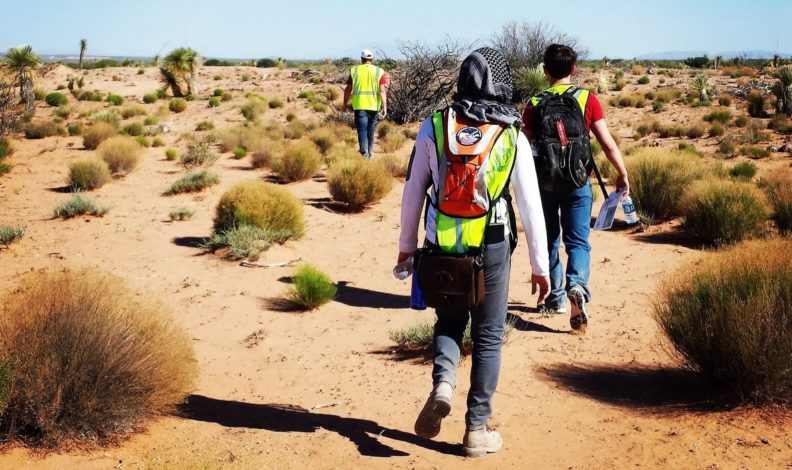
IREC 2018 CubSat-I Post-Mission Report by Colin Warn
Background:
The Washington State University (WSU) Aerospace club launched a L-class motor rocket under the name of Project Knarr up to 10k feet as part of the IREC 2018 Spaceport America competition. Part of it’s mission was to integrate a 4kg (8.8 lbs) payload in a 3U form-factor. The WSU Cougs in Space (CIS) provided the Aerospace club with this 3U. The 3U consisted of an aluminum 1U milled by the VCEA Engineering ProShop attached to a 3D-printed PLA 2U by means of a ¼-20 bolt.
CIS is planning to send a 1U to space next year thanks to a NASA Space Grant, and one of the factors that goes into launching the spacecraft successfully is doing a thorough vibration analysis of the structure as well as it’s components. The 1U housed a very rough vibration test consisting of a Raspberry Pi board with two accelerometers. This was done to test: General workmanship of the 1U, as well as displacement and yielding of the prototyped PCB boards.
Knarr, the rocket carrying up this payload, consisted of a custom-made avionics bay, a drogue and main chute, a custom-made P-Pod launcher, as well as three GPS trackers. Two of the GPS trackers used a sim card hosted by SpeedTalk, while the last GPS-tracker relied on line-of-sight with the rocket.
What Happened:
The 3U was integrated into Knarr successfully with a P-Pod form-factor perfect fit. Initially it was planned to deploy the 3U by means of a spring and CO2 charges: As the payload had it’s own SpeedTalk-enabled GPS tracker as well as it’s own parachute. The deployment system was ground-tested two days before launch with great success: The payload ended up launching about twenty feet out of the rocket. From a brief look at coverage maps of the area it looked like the area our rocket would be launching and landing in would be covered by the GPS SimCard provider: SpeedTalk.
On the day of the launch, when we did a quick ground test of our two GPS systems, we noticed our SpeedTalk GPS modules were not responding back. We now had to rely solely on the line-of-sight GPS tracker. Because of the uncertain signal, we decided to disable the deployment of the payload as the payload relied on one of these SpeedTalk GPS modules to locate it.
We launched on Friday, June 22nd 2018, at approximately 7 am. There was good visibility and clear skies. We got ArduPilot (our ground station) hooked up with our line-of-sight GPS module and launched. The rocket went off the rail and hit apogee without a hitch. From here on out there are mixed reports of what happened to the rocket there was another rocket that had gone to 30k feed that was being reported on by the launch range officer (LRO) at the same time he was reporting on ours.
The report that seemed to be the most pervasive was that our nose-cone popped off as we could see the puff of smoke at the top. We’re not sure if the drogue chute deployed. We’re much more confident that our main deployed however, as two of our team members spotted it deploying at 1,000 feet above the ground in addition to the LRO reporting it. Our flight was written up by the LRO as a nominal launch (i.e: Didn’t come down ballistic or in pieces).
The problem though, was that our ground station glitched out about a minute before launch. There was no one to catch this because our ground station and the place one pushed the button were in two different locations. The initial plan was to have the team pushing the button get the ground station hooked up, launch the rocket, then after it had been visually determined to land sprint back to the ground station to take down coordinates.
As they were 50 feet away from the ground station to push the launch button, they were not able to see the station lose connection with the rocket minutes before launch. Which meant after the launch button was hit, Project Knarr team only had visual indication of where the rocket landed.
After the rocket landed in the New Mexico desert, the team spent twelve hours over the next two days looking for the rocket in a four-square mile search area. Despite trudging through 107 degree weather with snakes, scorpions, 2 inch thorns littering the ground and shrubbery which limited line-of-sight to 5-10 feet, they were unable to locate it by the time the range was closed for good Saturday afternoon.
Lessons Learned:
After this launch, here were the lessons learned by Project Knarr that we’d like to pass on to future rocket teams:
- Don’t skimp out when it comes to the ground station. Get something like the Altus Metrum Telemega and throw a sizeable antenna inside the electronics bay of the rocket. Don’t trust cell service GPS systems as there are plenty of dead zones around the world, get something sturdy and make it redundant.
- Wear long pants and hiking books at the launch site. We would’ve been able to cover much more ground much faster if we had been wearing thicker boots and longer clothing.
- Lots of water and sunscreen. We actually did a pretty good job staying on top of these, but we want to emphasize for future teams about the importance of these two items. We had about 2 liters per team member per hour we spent walking around in the desert.
- Only one person ended up knowing 95% of how the rocket worked and how it was supposed to launch. A plan for transferring knowledge as well as delegating the various subtasks is important. Much like there are redundant systems in a rocket, there must be at least two people onsite who know how to operate a given facet of the rocket.



